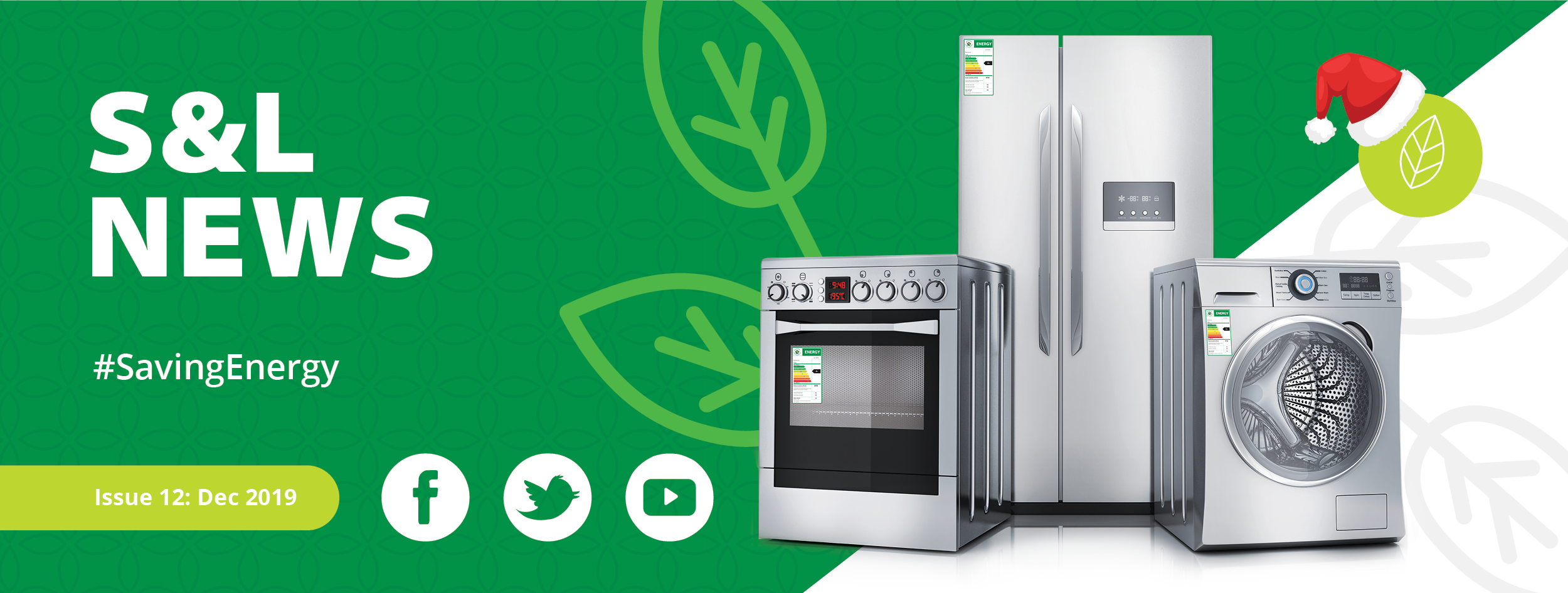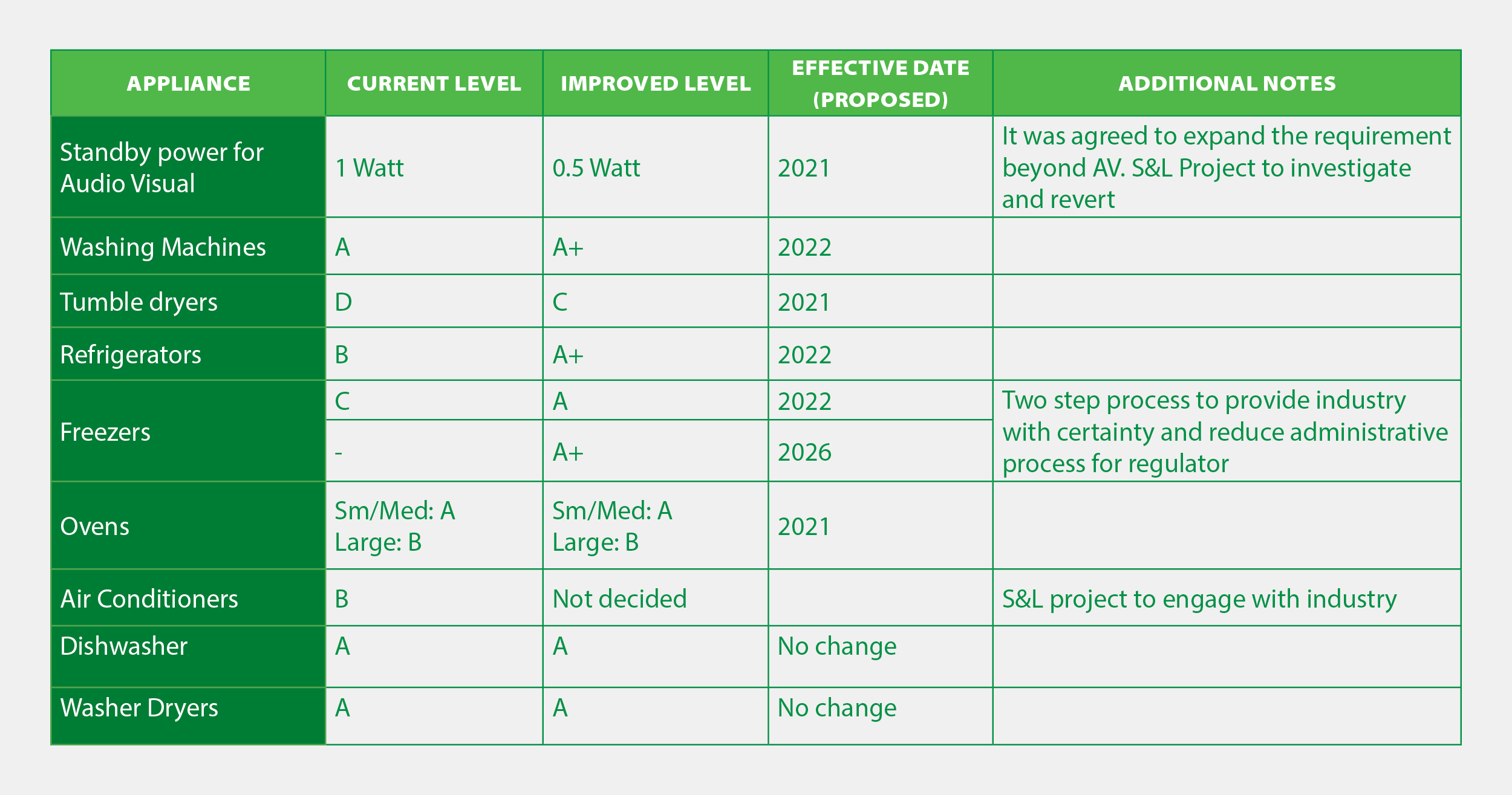Newsletter Issue 12 December 2019

Project Manager’s Message
With the end-of-year festive season fast approaching, I’m sure I’m not alone in looking forward to some rest and relaxation – especially given that as a project, we can all look back on a good year. (See all editions of S&L News 2019 here)
Our combined progress in promoting effective energy efficiency in our own country, and our interactions and collaborations with like-minded institutions and initiatives around the world, have now made us both a significant national actor, and a respected international contributor to energy efficiency discourse.
We can all be proud of that. Thank you for your participation! We look forward to more in 2020.
In this final edition of S&L News we update you on the outcomes of the workshop to strengthen the Minimus Energy Performance Standards (MEPS); share a recent study on the projected impacts of the S&L project; and its representation at the 10th annual International Conference on Energy Efficiency in domestic Appliances and Labelling (EEDAL) which was held in China.
The above represents our accelerated actions as a project, both domestically and internationally; and point to a fantastic 2020 if we all pull together. So please, get and stay involved in the new year! And if you haven’t already, subscribe to the monthly S&L News here. Enjoy the summer holiday season and see you all in January.
Theo Covary
S&L Project Manager

S&L Project Workshop to Strengthen MEPS – Gateway to 2020
2019 is ending in exactly the same way that 2020 will begin: With the process of strengthening MEPS and redesigning the EE appliance label, well under way – representing a major milestone for the project. And I would like to personally thank the more than 50 participants who took a day out of their busy schedules to attend. With such a high number of attendees, which included ministries, national implementing partners, manufacturers, industry associations, consumer groups and other interested and affected parties, the consultation process was open and extensive.
WHY?
We all know that the current MEPS are outdated. The global benchmark is to revise every five years, in line with evolving technological capacity; and our revision is well past due. Which is why it was crucial to hold this multi-stakeholder workshop; to reach consensus on strengthening MEPS and changing the EE label – based on credible research and in-depth preparation by the project team and other national and international stakeholders, throughout the year.
WHAT WAS AGREED?
The table summarises the decisions taken at the workshop.

WHAT NOW?
Now, that consensus on strengthening MEPS was reached at the workshop, the National Regulator for Compulsory Standards can proceed with drafting relevant amendments to VC9008. (Look out for status updates in 2020 editions). This also provides a seminal opportunity to apply our minds to ensure that as a whole, the most up-to-date standards are being applied throughout, by all.
UNIFORM STANDARDS & INDUSTRY PARTICIPATION
As discussed at the workshop, the responsibility of ensuring that the most recent and appropriate standards are being used by the program, does not lie solely with government. The industry has to participate more actively – for its own interest – because out of date standards have the potential to increase operational costs. For imported products, it may mean that additional testing is needed to meet specifications of the old standard, which have been removed or changed in the newer versions that have been adopted by major markets, such as the EU, China, Australia. Local manufacturers run the risk of their products not being accepted in international markets, with a report that tested to an out-of-date standard. So, for industry, it is both an obligation and of direct benefit, to participate in Standards Technical Committee meetings – and if not able or willing to do so directly, to be represented by industry associations. We look forward to much more concerted industry participation in 2020.
NEW LABEL; BETTER BUY
As stated in past editions of the S&L News, the project has been undertaking critical research, including detailed consumer studies, on updating the EE appliance label. The purpose of this is to bring it in line with the project’s massive progress since the label’s original conception and to give the consumer an even better, more user-friendly resource. Three primary considerations drive the process:
- Adding a QR code that will allow consumers and the regulator immediate access to the online registration database;
- Assessing the feasibility of replacing the text on the label with infographics, in accommodating the linguistic diversity and multiple educational and literacy levels in South Africa.
- Rescaling the energy classes in line with developments in the EU, which entails removing the A+, A++ and A+++ classes and reverting to the original, more understandable, A-G scale.
WORKSHOP OUTCOMES AND PRESENTATIONS
Via several presentations, the workshop addressed global insights and key national perspectives in great detail; to unpack the process and rationale behind the revision of MEPS and the EE label. We would like to thank all presenters and participants for a very productive day, and if you were unable to attend, or were there but would like to revisit the presentations; these are available here.
S&L Revision – Impact Assessment
A new study estimates the energy savings achievable by South Africa’s S&L program in the residential sector, (If regulations are passed in 2020 and effective in 2021/ 2022) include:
- 6 terawatt-hours (TWh) will be saved in 2030 and 9.5 TWh will be saved in 2040
- 3.7 megatons (Mt) of CO2 will be mitigated in 2030 and 5.8 Mt in 2040
- 6.5 billion liters of water consumption avoided by 2030, representing approximately 100 liters per capita in 2030
- 4 kilotons (kt) of particulate emissions will be avoided, as well as 4.3 Mt of sulfur oxides (SOx) and 23 kt of nitrogen oxides (NOx) in 2030.
Of much importance for the nation; consumers CAN reduce the operating costs of their electric equipment by R15.1 billion In 2030.
[The study was developed based on a collaboration between USAID, Lawrence Berkeley National Laboratory (LBNL), South Africa Department of Mineral Resource and Energy, UNDP and SANEDI)]
The full report can be downloaded here
S&L Project Presentations at the Annual EEDAL International Conference
S&L Project representatives presented three papers to a global audience that included manufacturers, consumers, governments, utilities and international organisations, as well as representatives from academia and research organisations, at the EEDAL International Conference held in Jonan, China, from 6 to 8 November. EEDAL is aptly described as “an influential and recognised international event to discuss the progress achieved, and latest developments in energy efficiency technologies, behavioural aspects and policies”. It is expressly aimed at providing a synergistic setting, where global insights and experiences can be shared, and international collaborations and partnerships can be explored and established.
The three S&L Project papers were all well received, and it was a great opportunity to inform a broad cross-section of the international community about our project’s progress. These can be accessed here.
“The climate crisis has already been solved. We already have all the facts and solutions. All we have to do is to wake up and change.“
– Greta Thunberg
